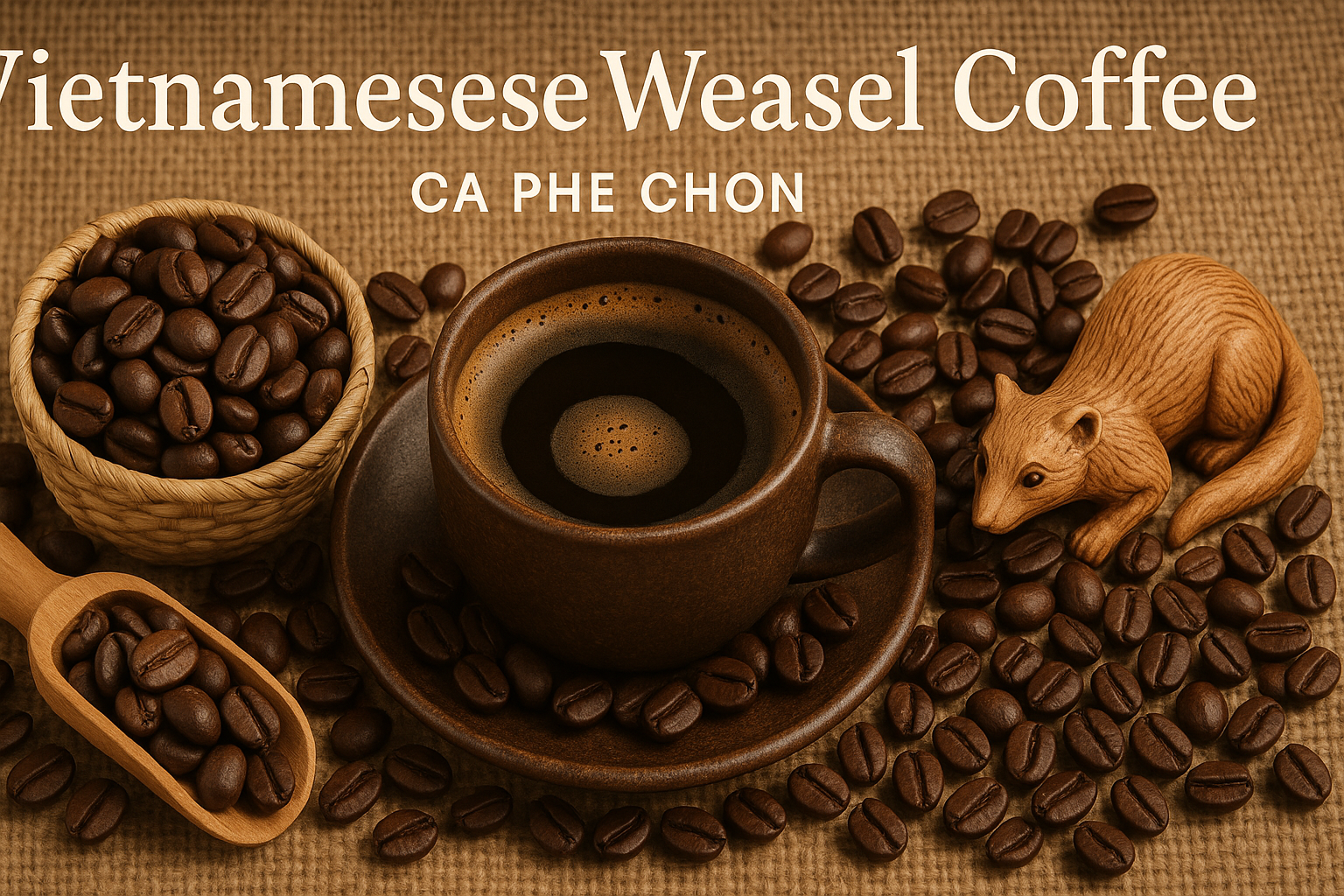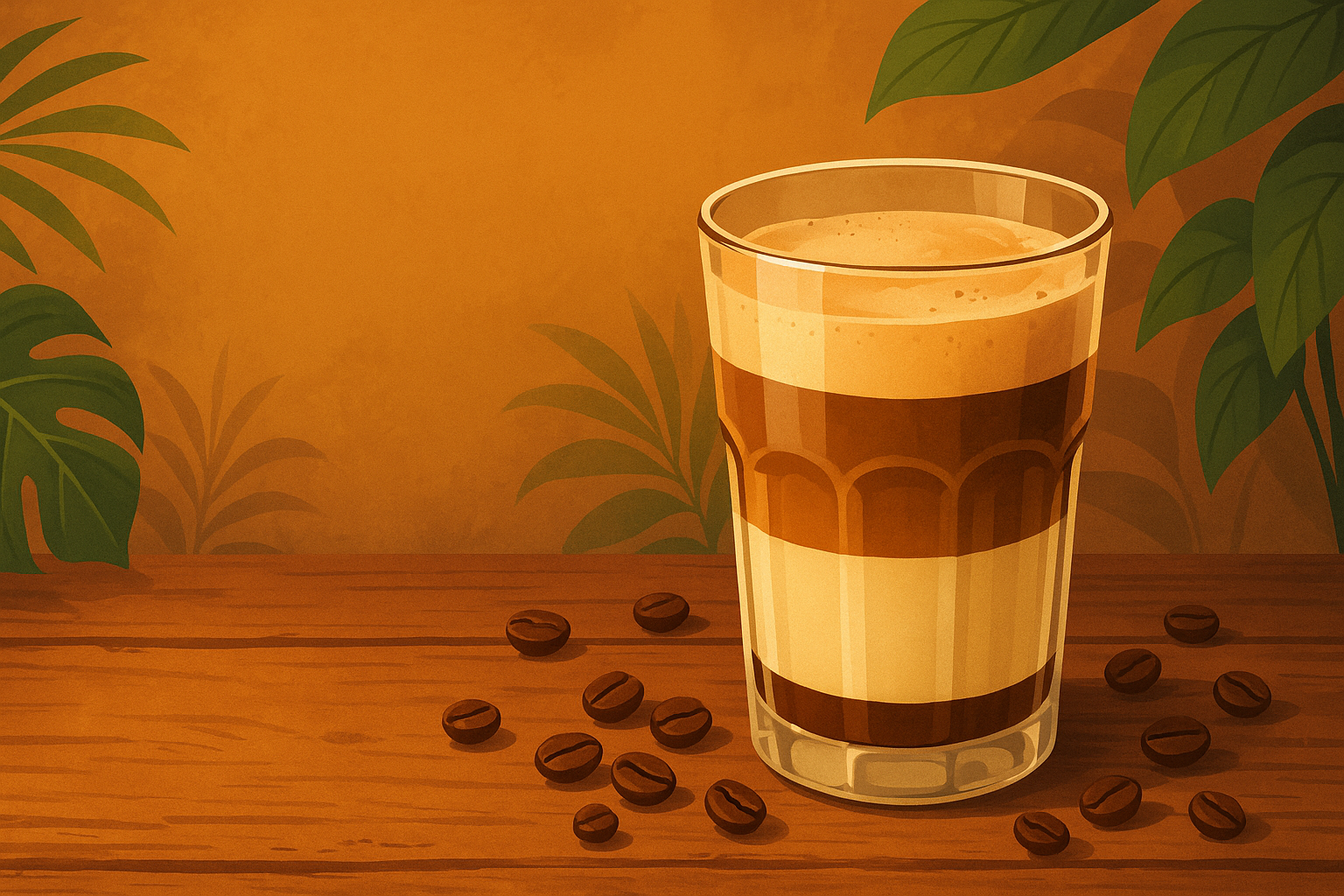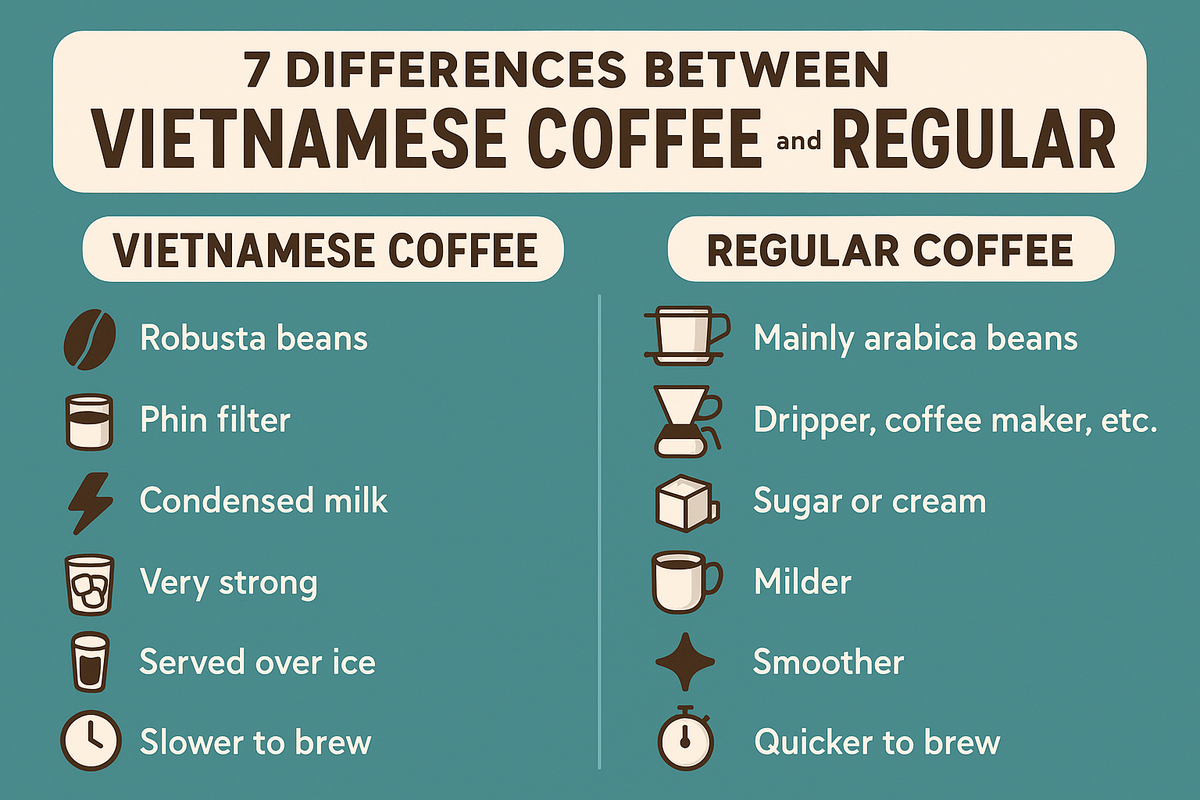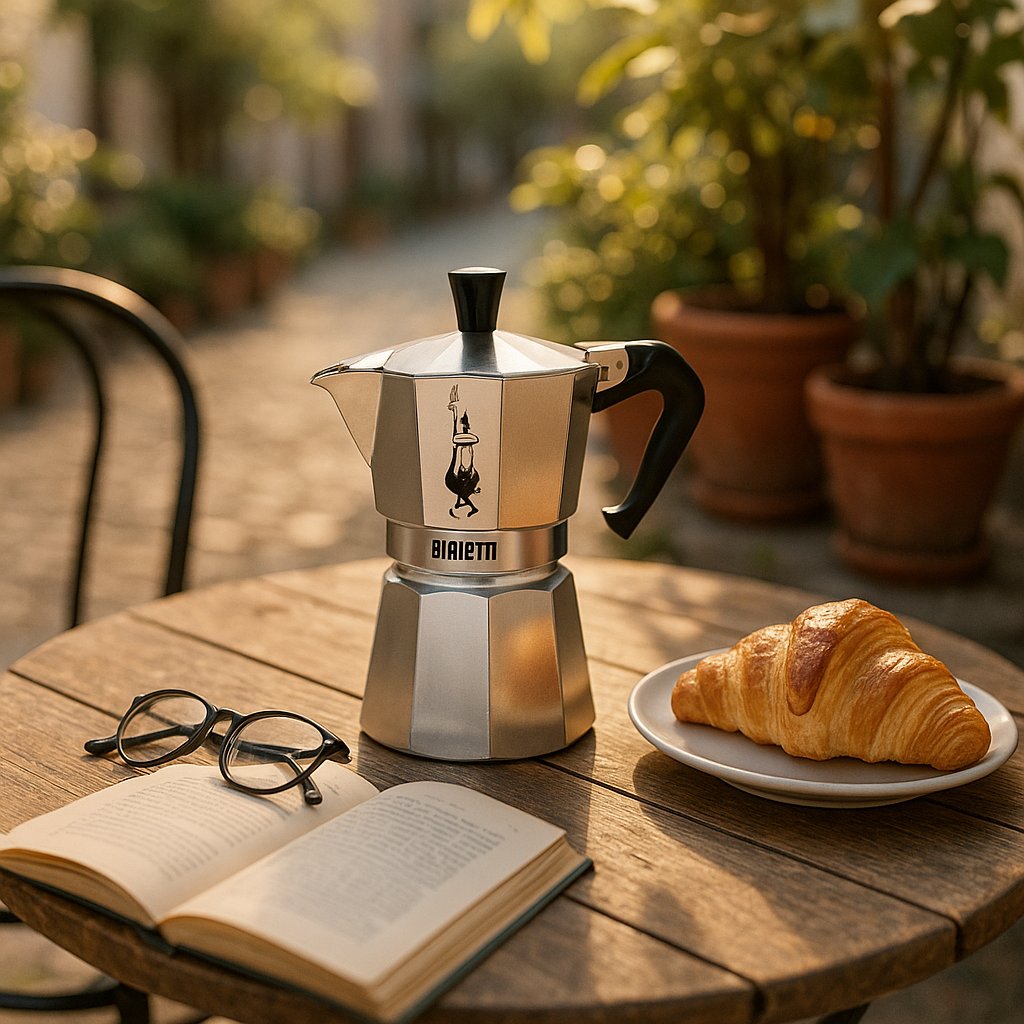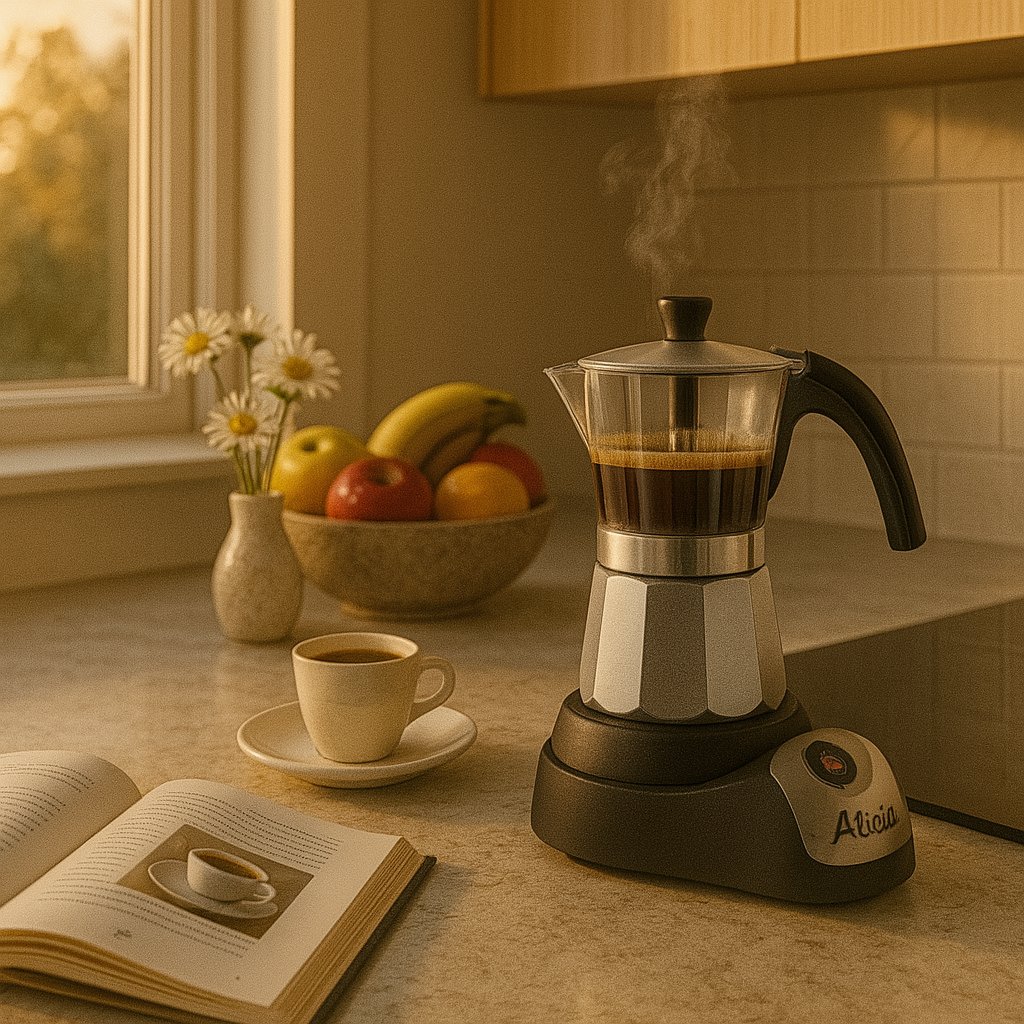What Does Kopi Luwak Taste Like? Complete Flavor Guide
Discover the truth about the world's most expensive coffee with Marco's authentic tasting experience from Indonesian coffee farms. Learn what Kopi Luwak really tastes like and whether it's worth the premium price.
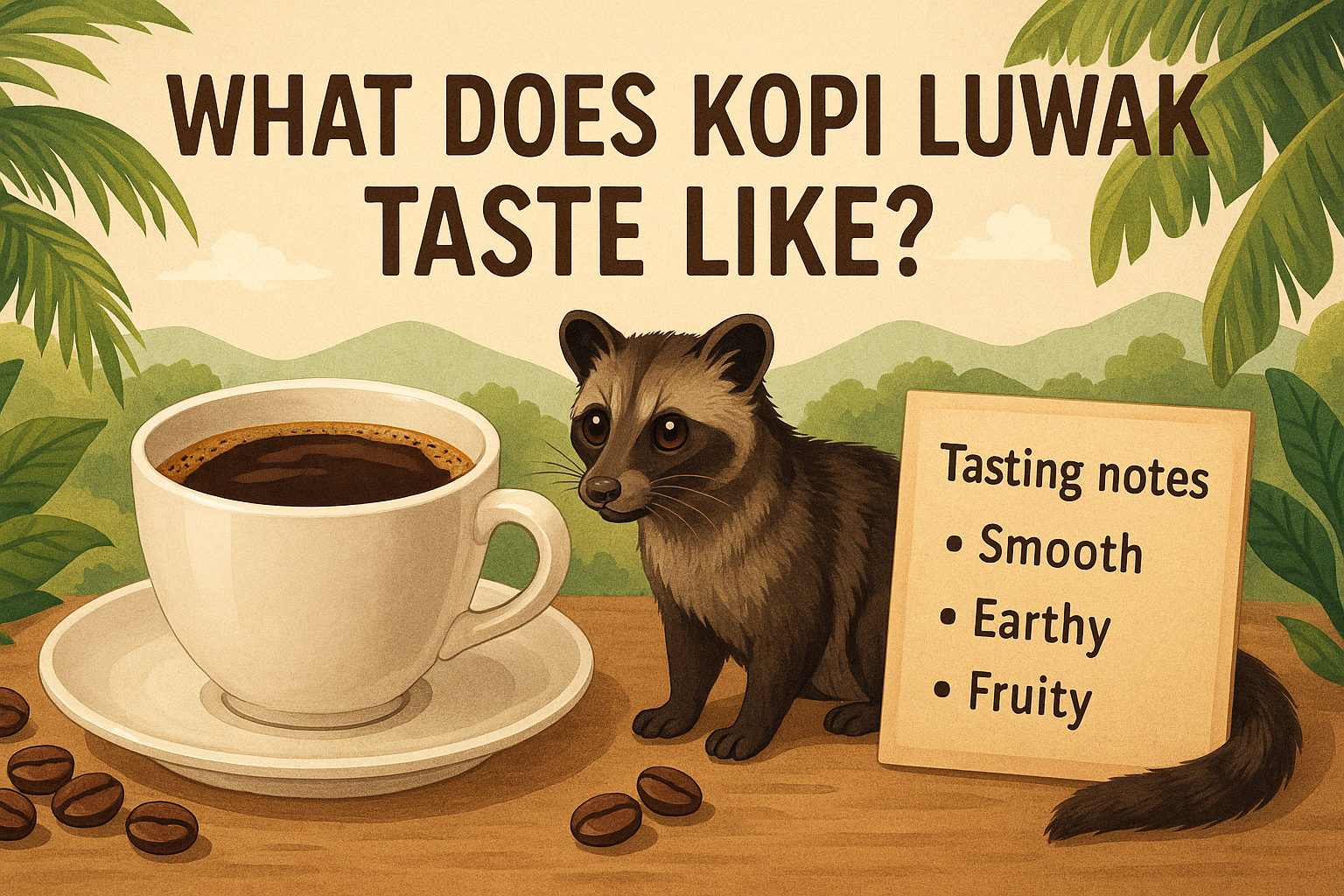
Introduction: My First Encounter with Kopi Luwak
I'll never forget the moment I first tasted Kopi Luwak during my coffee sourcing trip to Sumatra, Indonesia. Sitting in a small plantation outside Medan, watching the morning mist rise from the Arabica trees, I was about to experience what many call the "holy grail" of coffee—beans that had been naturally processed through the digestive system of Asian palm civets. The local farmer, Pak Budi, handed me a small cup with a knowing smile, warning me that this coffee would either revolutionize my understanding of flavor complexity or leave me questioning everything I thought I knew about expensive coffee.
That first sip was a revelation. The coffee possessed an extraordinary smoothness I had never encountered before, with flavor notes that seemed to dance across my palate in ways that defied my previous coffee experiences. But it also raised uncomfortable questions about ethics, authenticity, and whether any coffee could truly justify its astronomical price tag of $300-600 per pound.
Over the years, I've tasted authentic Kopi Luwak from multiple Indonesian farms, investigated countless imposters in high-end coffee shops, and spoken with producers, scientists, and fellow coffee experts about this controversial brew. The truth about Kopi Luwak's taste is far more complex—and often disappointing—than the marketing suggests.
In this comprehensive guide, I'll share everything I've learned about what authentic Kopi Luwak actually tastes like, why it tastes different from regular coffee, how to identify quality variations, and most importantly, whether the flavor experience justifies the ethical and financial costs. Whether you're curious about trying this legendary coffee or simply want to understand the hype, this guide will give you the complete picture based on real-world tasting experience and scientific understanding.
Quick Taste Summary
Authentic Kopi Luwak Flavor Profile: Exceptionally smooth with reduced bitterness, earthy undertones, complex fruity notes, syrupy body, and a remarkably clean finish. The digestive process creates a unique flavor that's less acidic and more balanced than the same beans processed conventionally.
The Authentic Kopi Luwak Taste Experience
First Impressions: Aroma and Initial Sip
The first thing you'll notice about authentic Kopi Luwak is its aroma—it's remarkably clean and complex. Unlike many specialty coffees that hit you with bold, immediately recognizable scents, Kopi Luwak's fragrance is more subtle and layered. You'll detect earthy, almost chocolate-like base notes, followed by hints of tropical fruit and a distinctive smoothness that seems to promise the gentleness to come.
When you take that first sip, the most striking characteristic is the complete absence of harshness. If you're accustomed to the bite that even high-quality coffees can have, Kopi Luwak will surprise you with its silk-like smoothness. This isn't merely "mild" coffee—it's coffee that has been fundamentally transformed at a molecular level.
Detailed Flavor Breakdown
Primary Flavor Notes
Base Flavors
- • Rich chocolate undertones (70% dark chocolate)
- • Earthy, forest floor complexity
- • Subtle nutty backdrop (almonds, hazelnuts)
- • Mild tobacco notes (in aged beans)
Bright Notes
- • Tropical fruit sweetness (mango, papaya)
- • Citrus hints (orange zest, not lemon)
- • Floral undertones (jasmine, honeysuckle)
- • Natural honey-like sweetness
Mouthfeel and Body
The body of authentic Kopi Luwak is one of its most distinctive characteristics. It's medium to full-bodied but with a unique quality I can only describe as "velvety." The coffee coats your mouth gently, without the oily residue that some full-bodied coffees leave behind. The mouthfeel is clean yet substantial, creating a drinking experience that feels both luxurious and effortlessly smooth.
What sets Kopi Luwak apart from other smooth coffees is its balance. Many mild coffees achieve smoothness by sacrificing complexity, but authentic Kopi Luwak maintains remarkable flavor depth while eliminating harsh edges. It's as if the civet's digestive process acts as nature's perfect filter, removing unwanted compounds while preserving and enhancing the desirable ones.
The Finish
The finish of authentic Kopi Luwak is exceptionally clean and long-lasting. Unlike coffees that fade quickly or leave bitter aftertastes, Kopi Luwak's flavors gradually transform as they linger. You'll experience a progression from the initial fruity-chocolate notes to a subtle sweetness, finally settling into a gentle, earthy conclusion that invites the next sip.
The "Wow Factor"
For many coffee enthusiasts, the most remarkable aspect of authentic Kopi Luwak isn't any single flavor note—it's the overall harmony. Every element seems perfectly balanced, creating a drinking experience that feels almost orchestrated. This balance is what justifies the reputation, even if it doesn't always justify the price.
How Kopi Luwak Compares to Regular Coffee
To truly understand what makes Kopi Luwak special, you need to compare it directly to the same coffee beans processed conventionally. I've been fortunate to do this exact comparison multiple times with different Indonesian farms, and the differences are both subtle and profound.
Side-by-Side Tasting Analysis
Regular Arabica (Same Farm)
- Acidity: Bright, sometimes sharp
- Bitterness: Noticeable, especially in darker roasts
- Body: Medium, can feel thin
- Complexity: Good but straightforward
- Finish: Short to medium, may have bitter notes
- Overall: Pleasant but unremarkable
Kopi Luwak (Same Farm)
- Acidity: Mellow, perfectly balanced
- Bitterness: Virtually absent
- Body: Full, syrupy texture
- Complexity: Layered, evolving flavors
- Finish: Long, clean, sweet conclusion
- Overall: Harmonious, memorable experience
Why the Difference? The Science of Civet Processing
The distinctive taste of Kopi Luwak comes from the unique fermentation process that occurs in the civet's digestive system. Asian palm civets are selective eaters, choosing only the ripest coffee cherries. During the 12-24 hour digestion process, several important changes occur:
Scientific Processing Effects
- Protein Breakdown: Digestive enzymes break down proteins that normally contribute to bitterness
- Reduced Caffeine: Some caffeine is absorbed, resulting in a naturally less bitter brew
- Fermentation: Natural fermentation enhances fruity flavors and creates complex esters
- Selective Filtering: Civets naturally select the best cherries, ensuring quality input
- Unique Bacteria: Beneficial bacteria in the civet's gut create distinctive flavor compounds
Comparing to Other Premium Coffees
I've also compared authentic Kopi Luwak to other premium coffees like Jamaica Blue Mountain, Hawaiian Kona, and Panama Geisha. While these coffees excel in their own right, Kopi Luwak offers a uniquely smooth profile that's impossible to replicate through conventional processing methods.
However, it's important to note that "different" doesn't automatically mean "better." While Kopi Luwak's smoothness is remarkable, some coffee enthusiasts prefer the bright acidity and bold flavors found in conventionally processed specialty coffees. The preference often comes down to whether you value harmony and smoothness over intensity and complexity.
Quality Variations: Not All Kopi Luwak Tastes the Same
One of the most important things to understand about Kopi Luwak is that quality varies dramatically. In my experience tasting Kopi Luwak from different sources, I've encountered everything from transcendent coffee experiences to bitter disappointments that tasted worse than grocery store blends. Here's how to understand and identify quality differences:
The Quality Spectrum
Wild-Sourced, Single-Origin Premium
Characteristics: Exceptional smoothness, complex flavor layers, clean finish, perfect balance
Source: Wild civets, single plantation, carefully collected and processed
Price Range: $400-600 per pound
Availability: Extremely limited, often pre-sold to collectors
Ethical Farm-Raised, Premium Processing
Characteristics: Very smooth, good complexity, minor imperfections in balance
Source: Ethically treated captive civets, controlled diet, careful processing
Price Range: $200-400 per pound
Availability: Limited but more accessible than wild-sourced
Commercial Farm Production
Characteristics: Smooth but lacks complexity, may have off-flavors
Source: Commercial civet farms, mixed quality control
Price Range: $100-200 per pound
Availability: Widely available through specialty retailers
Fake or Heavily Adulterated
Characteristics: No distinctive smoothness, often bitter, tastes like regular coffee
Source: Regular coffee beans sold as Kopi Luwak, or heavily mixed blends
Price Range: $30-100 per pound (suspiciously low)
Availability: Common in tourist areas and online marketplaces
Red Flags: How to Spot Fake Kopi Luwak
Warning Signs of Fake Kopi Luwak
- Price Too Good to Be True: Authentic Kopi Luwak under $100/lb is almost certainly fake
- Mass Availability: If it's widely available in multiple coffee shops, it's likely adulterated
- Lacks Distinctive Smoothness: If it tastes like regular coffee, it probably is
- No Provenance Information: Legitimate sellers provide detailed source information
- Perfect Looking Beans: Authentic Kopi Luwak beans are often irregular and show processing marks
Unfortunately, studies suggest that up to 80% of Kopi Luwak sold globally is either completely fake or heavily adulterated with regular coffee beans. This widespread fraud has diluted the reputation of authentic Kopi Luwak and left many consumers wondering what the fuss is about.
How to Brew Kopi Luwak for Optimal Taste
If you're fortunate enough to acquire authentic Kopi Luwak, proper brewing is essential to experience its unique characteristics. The processing that creates Kopi Luwak's distinctive smoothness also makes it more forgiving to brew than regular coffee, but there are still best practices to follow:
Optimal Brewing Methods
Recommended Brewing Techniques
Pour-Over (V60, Chemex)
- • Ratio: 1:15 (coffee to water)
- • Water temp: 195-200°F
- • Grind: Medium-fine
- • Time: 3-4 minutes
- • Best for highlighting complexity
French Press
- • Ratio: 1:12 (coffee to water)
- • Water temp: 200°F
- • Grind: Coarse
- • Time: 4 minutes
- • Best for full body experience
Critical Brewing Tips
Temperature Sensitivity
Kopi Luwak is more sensitive to over-extraction than regular coffee. The reduced bitterness compounds mean that over-brewing will emphasize unpleasant flavors more dramatically. Stay within the 195-200°F range and avoid extended contact times.
Timing Recommendations
- Grind Fresh: Like all specialty coffee, grind immediately before brewing
- Bloom Time: 30-45 seconds for pour-over methods
- Total Extraction: Keep under 5 minutes for most methods
- Serve Immediately: Kopi Luwak's delicate flavors fade quickly when left sitting
What to Avoid
Certain brewing methods can actually diminish Kopi Luwak's unique characteristics. Avoid espresso preparation unless you're experienced with low-acid coffees, as the high pressure can emphasize earthy notes unpleasantly. Similarly, automatic drip machines often use water that's too hot and extract for too long, masking the subtle complexity that makes Kopi Luwak special.
The goal is to create a clean, balanced extraction that showcases the coffee's natural smoothness while preserving its complexity. Think of brewing Kopi Luwak like preparing a fine wine—the processing has already done the heavy lifting, so your job is simply not to interfere with what nature and the civet have created.
Is Kopi Luwak Worth the Price? An Honest Assessment
This is the question every coffee enthusiast asks, and after years of tasting both authentic and fake Kopi Luwak, I can provide a nuanced answer. The truth is complex and depends entirely on your priorities, budget, and what you're hoping to experience.
The Mathematical Reality
Cost Per Cup Analysis
High-End Specialty Coffee
$1.50
per cup
Premium Kopi Luwak
$25-40
per cup
Ultra-Premium Kopi Luwak
$50-75
per cup
When It Might Be Worth It
Scenarios Where Kopi Luwak Delivers Value
- Special Occasions: As a once-in-a-lifetime tasting experience
- Coffee Education: To understand the full spectrum of coffee possibilities
- Gift for Coffee Enthusiasts: For someone who has tried everything else
- Palate Sensitivity: If you're particularly sensitive to coffee bitterness
- Cultural Interest: As part of learning about Indonesian coffee culture
When It's Probably Not Worth It
Better Alternatives Exist
- Daily Drinking: The cost makes regular consumption impractical for most people
- Novelty Seeking: Many other unique coffees offer interesting experiences at lower cost
- Flavor Intensity: If you prefer bold, acidic coffees, Kopi Luwak may seem bland
- Ethical Concerns: Animal welfare issues make it uncomfortable for many consumers
- Availability Doubts: If you can't verify authenticity, you're likely overpaying for regular coffee
My Honest Recommendation
After extensive experience with authentic Kopi Luwak, I believe it's worth trying once if you can afford it without financial stress and can verify its authenticity. The taste experience is genuinely unique and will expand your understanding of what coffee can be. However, I don't believe it represents good value for money compared to other exceptional coffees.
For the same money you'd spend on a pound of premium Kopi Luwak, you could experience five or six different world-class coffees, each offering its own unique characteristics and cultural significance. From a pure flavor perspective, I've tasted naturally processed Ethiopian coffees and competition-grade Panama Geishas that provided more memorable experiences at a fraction of the cost.
Final Value Assessment
For the Experience: Worth trying once ★★★★☆
For Regular Drinking: Poor value ★★☆☆☆
For Coffee Education: Educational value ★★★★★
For Gifting: Impressive but ethically complex ★★★☆☆
Ethical Considerations: The Dark Side of Kopi Luwak
No discussion of Kopi Luwak would be complete without addressing the significant ethical concerns surrounding its production. As demand for this coffee has grown, so have the problems associated with meeting that demand through less-than-ethical means.
The Wild vs. Captive Reality
Originally, Kopi Luwak came exclusively from wild Asian palm civets that naturally selected and consumed coffee cherries in their forest habitat. This created a truly limited supply—wild civets only ate the ripest cherries and produced small quantities of processed beans. However, as demand exploded, the market shifted toward captive civet operations that raise serious animal welfare concerns.
Animal Welfare Concerns
- Cage Confinement: Many civets are kept in small, cramped cages their entire lives
- Forced Feeding: Captive civets are often force-fed coffee cherries exclusively
- Stress and Disease: Unnatural diets and confinement lead to health problems
- Shortened Lifespans: Captive civets typically live much shorter lives than wild ones
- Poor Living Conditions: Many operations prioritize profit over animal welfare
How This Affects Taste
Beyond the ethical implications, these production methods actually diminish the quality that made Kopi Luwak famous in the first place. Wild civets select only the ripest, highest-quality cherries and consume a varied diet that includes fruits, insects, and other foods. This natural diet contributes to the unique fermentation process and flavor development.
Captive civets fed exclusively on coffee cherries produce a different product entirely. The stress of captivity, poor diet, and unnatural living conditions all impact the digestive process that creates Kopi Luwak's distinctive characteristics. Many coffee experts believe that much of the commercial Kopi Luwak available today lacks the complexity and smoothness of the original wild-sourced product.
Identifying Ethical Sources
Signs of Ethical Production
- Wild Collection Documentation: Verifiable evidence of wild sourcing
- Small Production Quantities: Truly wild-sourced Kopi Luwak is extremely limited
- Premium Pricing: Ethical sources command the highest prices
- Transparency: Detailed information about collection methods and civet welfare
- Certification: Third-party verification of ethical practices
- Local Community Support: Programs that benefit indigenous communities
Alternative Considerations
Given these ethical concerns, many coffee enthusiasts choose to explore other unique coffee experiences instead. There are numerous naturally processed coffees, experimental fermentation methods, and rare cultivars that offer distinctive flavor profiles without the ethical baggage. Some options to consider include:
- Naturally processed Ethiopian coffees with complex fruit notes
- Anaerobic fermentation coffees from Central American farms
- Rare cultivars like Purple Caturra or Sudan Rume
- Competition-grade coffees from Cup of Excellence auctions
- Carbon dioxide processed decaf coffees (surprisingly complex)
These alternatives often provide equally memorable experiences while supporting sustainable farming practices and fair labor conditions.
Conclusion: The Complete Truth About Kopi Luwak Taste
After years of tasting authentic Kopi Luwak from multiple sources, investigating the market, and comparing it to countless other exceptional coffees, I can definitively say that genuine Kopi Luwak does taste uniquely different from any other coffee I've experienced. The exceptional smoothness, complex flavor layering, and complete absence of bitterness create a drinking experience unlike anything else in the coffee world.
However, this distinctive taste comes with significant caveats. First, authentic Kopi Luwak is increasingly rare and expensive, with much of the market dominated by fakes and low-quality products that bear little resemblance to the original. Second, the ethical concerns surrounding modern production methods make it difficult to enjoy guilt-free, especially when equally impressive coffee experiences are available through more sustainable means.
The taste itself is genuinely remarkable—imagine the smoothest coffee you've ever experienced, then remove any trace of bitterness while maintaining full complexity and adding layers of fruit, chocolate, and earthy notes. It's coffee that seems to have been perfected by nature itself, with every harsh edge removed while preserving everything that makes coffee beautiful.
But here's what I've learned through this journey: while Kopi Luwak represents a fascinating extreme in coffee processing, it's not necessarily the pinnacle of coffee excellence. The coffee world is vast and full of incredible experiences that don't require compromising on ethics or spending a fortune. Some of my most memorable coffee experiences have come from naturally processed African coffees, experimental Latin American fermentations, and competition-grade lots that cost a fraction of Kopi Luwak's price.
If you have the opportunity to try authentic, ethically sourced Kopi Luwak, I recommend taking it—but approach it as a cultural and educational experience rather than the ultimate coffee goal. The real magic in coffee comes from understanding how terroir, processing, and human skill combine to create something greater than the sum of its parts. Kopi Luwak is just one fascinating chapter in that much larger story.
Whether you choose to seek out this legendary coffee or explore the countless other amazing options available, remember that the best coffee is ultimately the one that brings you joy, fits your values, and connects you to the incredible global community of people passionate about this remarkable drink. The journey of discovery is far more valuable than any single destination, no matter how exclusive or expensive it might be.
